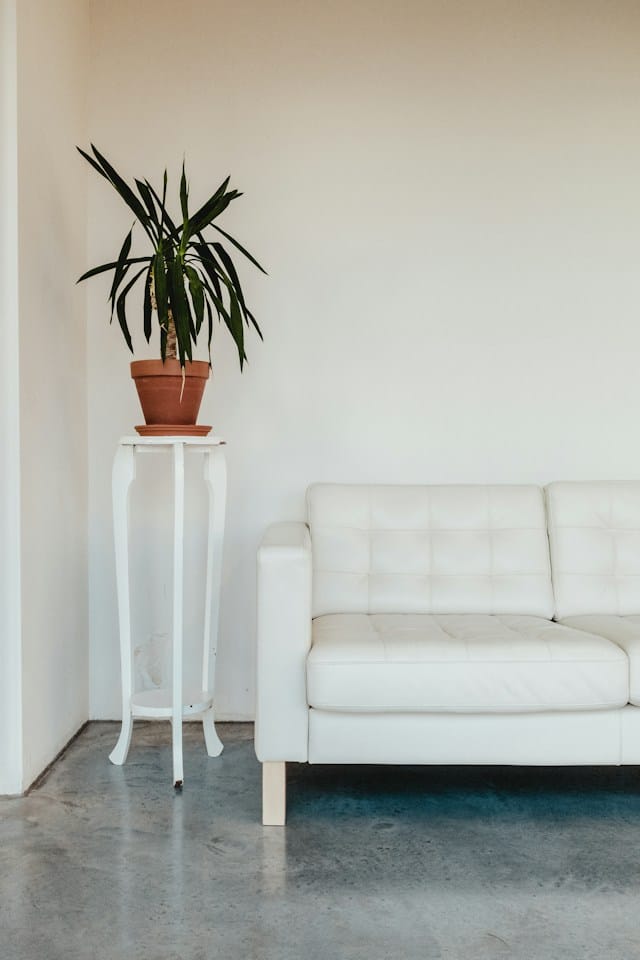In the realm of creativity, having your own art studio at home can be a liberating experience. It affords you the opportunity to marinate in your creative juices, away from the usual distractions that come with public places. You have the freedom to express your art in its truest form, without boundaries or inhibitions. However, setting up a home art studio can be challenging, especially if you have a small space at your disposal. In this comprehensive guide, we will guide you through the various steps involved in creating your own private haven of creativity.
Selecting the Right Room for Your Art Studio
The first challenge in setting up your art studio at home is finding the perfect room. It needs to be a place that fuels your creative instincts, a place where you can immerse yourself in your art without distractions.
Cela peut vous intéresser : Pet-friendly homes: creating a safe space for your furry friends
You might be tempted to choose the largest room available, but remember, the size of the room isn’t as important as its functionality. If you work with small materials and need little space, a small room can serve as your art studio. However, if your work involves larger pieces, you might need a larger room or even a standalone shed or garage.
Natural lighting is critical for any art studio. Choose a room with large windows, ideally facing north or south, to avoid direct sunlight which can alter the true colors of your work.
A découvrir également : Bathroom renovation ideas: from basic to luxurious
Furnishing Your Studio
Furnishing your studio is a crucial step. Keep your furniture minimal and functional. Remember, this is a place of work. Start with a good table. Depending on the nature of your work, you might need a drafting table, a flat table, or even a standing desk.
Storage is another important aspect to consider. You will need ample space to store your supplies. Open shelves, drawers, and cabinets can be used effectively for this purpose.
Don’t forget to create spaces for inspiration. A pin board on the wall or a corner with art books can serve as your creative corner, offering you inspiration when you need it.
Setting Up the Lighting
Good lighting can make or break an art studio. It’s important to have a combination of natural and artificial light. As we mentioned earlier, having large windows that let in plenty of natural light is ideal. However, you will also need good quality artificial lighting for times when natural light is inadequate.
Consider having adjustable overhead lights that you can control depending on your needs. Task lighting, such as clip-on lights or desk lamps, will also be useful for focused work.
Organizing Your Supplies
Organizing your supplies is crucial for maintaining an efficient workspace. How you organize your supplies will depend on the type of art you create. If you work with paints, you might want to sort them by color or type. If you work with various materials, you might find it useful to sort them by project.
Consider using clear storage containers so you can see what’s inside at a glance. Label everything clearly and keep frequently used items within easy reach.
Creating a Creative Atmosphere
Lastly, remember to personalize your art studio. This is your space, your sanctuary, and it should reflect your personal style and artistic sensibilities. Hang up your favorite pieces, display objects that inspire you, and create a comfortable, inspiring atmosphere.
You can also play with colors. If you find certain colors stimulate your creativity, feel free to incorporate them into your space, either through wall color, furniture, or decorative items.
A home art studio is more than just a workspace. It is a testament to your passion for art and a space where you can explore your creativity without limitations. Remember, there’s no ‘one size fits all’ approach to setting up a home art studio. Your space should be as unique and individual as the art you create. Enjoy the process of setting up your art studio, and let it be a reflection of your artistic journey.
Note: This article does not conclude as it is intended to be a comprehensive guide to setting up your home art studio. As such, we encourage you to take the information provided and apply it to your unique situation.
Incorporating Multifunctionality into Your Home Art Studio
As you endeavor to establish your art studio, another thing to bear in mind is the need for multifunctionality. Art isn’t simply about the end-product; it’s about the process, the inspiration, and the creative exploration. Your studio space should reflect this multifaceted nature.
For those with a limited amount of space, the kitchen dining area can be a great place to set up your studio. Not only does this space offer ample natural light, it also encourages an organic blend of everyday life with the act of creating art.
Start by choosing furniture that serves multiple purposes. A dining table can double as a workspace, while a bookshelf can house both art supplies and cookbooks. This way, your creative space seamlessly integrates with your living environment, inspiring you to make art part of your daily routine.
Alternatively, your living room can also be transformed into a vibrant art studio. With careful arrangement, this space can accommodate your art sessions without disrupting its primary function. A corner can be dedicated to storing art supplies, while the centre can be left open for more substantial art pieces.
Lastly, ensure your space is adaptable. Today, you may need a large area to handle a big canvas. Tomorrow, you might be focusing on small sketches. A flexible art space can accommodate these shifts in your creative practice.
Maintaining Your Home Art Studio
Creating a home art studio is one thing, maintaining it is another. Regular upkeep of your space can help you save time and keep your creative juices flowing. Start by setting a regular schedule for cleaning and organizing your art supplies. A clean, tidy workspace can significantly enhance your productivity and creativity.
When it comes to organizing, assigning a specific place for every item can make your work process more efficient. Arrange your supplies in a way that suits your workflow. For example, if you frequently use certain brushes or paints, keep them within arm’s reach.
Do regular checks on your art supplies. Make sure your paints are not drying out, your brushes are clean, and your pencils are sharp. Replenishing your supplies regularly ensures you always have what you need to create art.
Remember that your home art studio is a living space that should evolve with you. Don’t be afraid to make changes, try different layouts, or introduce new elements to your studio. Your space should inspire you and make you excited to get to work.
Conclusion
Establishing your home art studio can be a transformative journey. It requires thoughtful planning, patience, and a willingness to adapt. Whether you’re working with a small space in your living room or a larger standalone area, the goal is to make the space functional, inspiring, and reflective of your personal style.
Remember to keep your studio organized and well-maintained to facilitate your creative process. And most importantly, let your space be a testament to your artistic journey. Each set art piece, each brushstroke symbolizes a part of your narrative as an artist.
As you step into your home studio, you’re stepping into a space that not only houses your art but also your dreams, aspirations, and creative spirit. Let it be a sanctuary that fuels your passion and propels you towards making art that truly resonates with you. So go ahead, cherish the process of setting up your studio, and let it inspire you to create art that is undeniably yours.
















